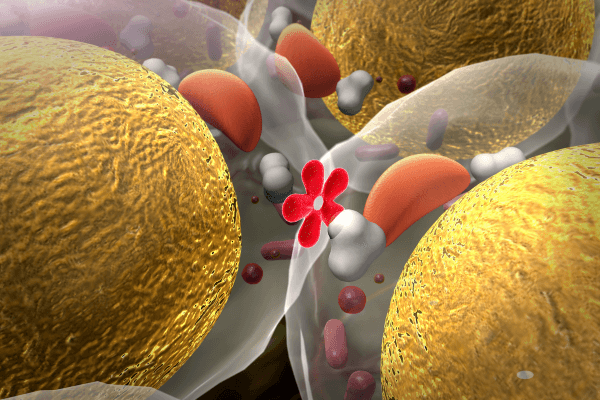What is refined flour?
Refined flour is known popularly by different names such as maida/all-purpose flour across the globe. It is a type of flour made from wheat. The original colour of the wheat extracted is yellowish which is due to the endosperm part of the wheat grain. Xanthophyll is a pigment which is yellow/orange in colour derived from carotenes. Xanthophyll is present in the endosperm. However, this yellowish colour of the flour is bleached by the addition of chemical bleaching agents to make it pleasing for consumers.
Which food products contain maida?
Maida has a long shelf life and can improve the texture of food because of its physical qualities. Popular Indian foods made from refined flour are – Naan, tandoori roti, bhatura, poori, pizza, samosa, cakes, bakery products etc.
Apart from these popular dishes, refined flour is used for these culinary purposes:
1. It is used to make a slurry and thickening agent.
2. It is used to make different varieties of pasta and pizza bases.
3. It is employed as an agent for dredging.
4. It is used to make different dishes like momos, bread, cakes, cookies etc.
Do you know how refined flour made its entry to India?
A short story behind the history of refined flour began in the Mughal era. Mughal emperor Babur (from Persia), disliked the taste of Indian roti and introduced flatbread instead. Though naan was originally made from whole wheat flour, the ancient grinding method did not separate the germ and bran. The introduction of roller milling in the 19th century contributed to the consumption of bread made from white flour.
Why is refined flour bleached?
- Bleaching agents are used to make refined flour look white and polished. However, most countries have regulated laws on the use of bleaching agents. Some surprising bleaching agents which were earlier in refining flour are:
- Benzoyl peroxide is additionally, utilised to treat acne lesions.
- Azodicarbonamide – Used as a blowing agent for plastics.
- Hydrogen peroxide – Used as a major bleaching agent in paper-pulp bleaching, laundry detergents, disinfectants etc.
- Acetone peroxide – Another colloquial name for acetone peroxide is “the mother of Satan.”
- Chlorine/chlorine dioxide – It is used to sanitise water, swimming pools, toilets etc.
Is refined flour harmful for health?
Despite the delicious taste of refined flour-based products, a study revealed several health consequences:
- Cancer – Cancer is the second leading cause of death worldwide. The bleaching agent “potassium bromate” which is used in making refined flour has been researched and classified as a genotoxic carcinogen. A genotoxic carcinogen is a chemical which can directly alter the genetic material of cells by acting on the target cells.
- Coeliac disease – The endosperm of the wheat grain has 2 types of protein – glutenin and gliadin.These proteins can become gluten when water is introduced.
Coeliac disease is an auto-immune condition which perceives gluten in the body to be a threat and thereby attacks it. This damages the surface of the bowel. The risk of developing coeliac disease can increase by 6.1% with higher gluten consumption.
Non-coeliac gluten sensitivity can also make the gut sore due to gluten consumption. - Diabetes mellitus – The bleaching agent used for refining flour – “chlorine dioxide” leaves a residue called “alloxan”. This residue destroys the pancreatic beta cells which secrete insulin and may lead to Type 1 diabetes mellitus. The high glycaemic index of maida can also be a cause of the development of Diabetes.
The HbA1c is a protein found in red blood cells (RBC) which carry oxygen and bind to blood glucose. A high HbA1c can be associated with the development of depression. - Coronary artery disease – Maida contains alloxan which can lead to the development of heart diseases.
- Bone diseases – Since the nutrients are removed during the process of refining maida, the pH of the flour is acidic in nature. When this acidic flour is consumed, an acid-alkaline imbalance is caused. Thus leading to the leaching of calcium from bones. This increases the risk of osteoporosis, arthritis etc.
- Mental health – A diet high in refined flour can damage the intestinal wall of the gut and also lead to malabsorption of nutrients. The good bacteria of the gut produce GABA, serotonin, norepinephrine, Dopamine, acetylcholine and melatonin. When gut health is affected, there is an increased risk of mood-related disorders such as depression, anxiety, schizophrenia etc.
For what reason is refined flour referred to as the “glue of the gut”?
In general food with gluten is sticky. It can interfere with digestion and leave a residue in the gut. When this happens, the immune system is activated and the intestinal lining gets damaged and sends a negative feedback mechanism. Refined flour does stick to the gut like glue. This is because it is void of fibre. When this flour sticks to the gut, it gets congested and leads to weight gain, stress, headaches, migraines etc.
How can you avoid refined flour in the diet??
- Always read the ingredient list mentioned on food labels.
- Confirm with the restaurant if the dish uses maida for preparation.
- Avoid processed and packaged food.
- Some sauces and batters might have hidden refined flour as an ingredient.
- Choose food brands which use clean ingredients.
- Prefer home-cooked food.
- Avoid food commonly made from maida such as fried street food.
Though people are becoming increasingly aware of the health consequences of refined flour, it is still used as a common ingredient in various recipes. It is suggested to exercise mindful eating choices if you still wish to incorporate refined flour occasionally in the diet.
Mayuri,
Dietetic Researcher, Simplyweight













